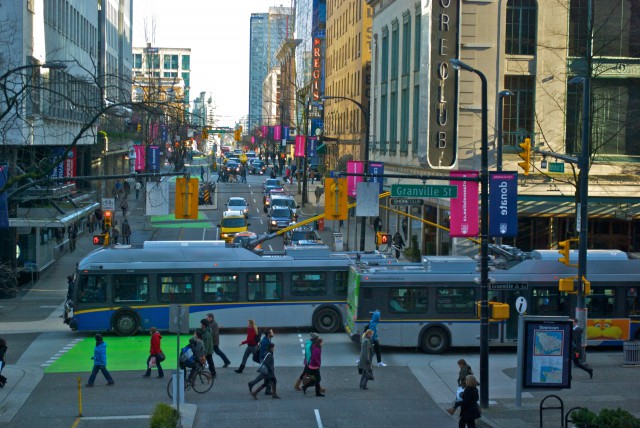TransLink 101’s back: We’re going to explore some more basic questions about our services
September 22, 2014
|By Allen Tung
TransLink 101’s back: We’re going to explore some more basic questions about our services
September 22, 2014
|By Allen Tung


We’re dusting off an old special series and bringing you another iteration of the TransLink 101 posts where we explore some basic questions about TransLink and the work that we do!
What’s TransLink 101 all about?
Last time, we covered off what TransLink does, TransLink’s responsibilities for roads and bridges, fare zones, how TransLink gets its funding, where buses and trains sleep at night, why can’t SkyTrain run 24 hours, and how do we keep the system in a stage of good repair!
We’re going back to basics again, but this time we’re going to focus more on the operations side of things! Our planned topics include:
- What is interlining?
- What does it mean when a bus is an express?
- What is short turning?
- What does far-side and near-side bus stop mean?
- What are detours and why do they happen?
As well, we’d like to answer a burning TransLink question you’ve always wanted the answer to! Suggest your topic in the comments!
Author: Allen Tung






The new rail line in Hawaii is supposed to run 20 hours a day when it opens.
http://www.citylab.com/tech/2014/09/honolulu-is-building-americas-first-fully-driverless-transit-system/380292/
Hi Sheba: That’s a pretty cool project in Hawaii. It makes the place even more irresistible! Thanks for sharing!
A post on operational contigency planning would be wonderful. What happens when a power feed breaker blows on Skytrain or the trolley network? How do drivers receive detour orders? How and when are spare busses and drivers staged and dispatched?
One question I’ve always wondered is how they choose what side of the Seabus terminal is active on any given day. I know that some times one side is under repair, but is there some method or is it just what the operator chooses on any given day? Also, is there a reason we cannot have simultaneous boarding on the Seabus……it seems like it would make it a faster process.
Why cant the #3 bus be turned into a express bus that goes straight to chinatown.
Hi Alan, Chad, and Raymond: Interesting questions! We’ll endeavour to investigate your questions and get you answers to ’em if possible. Cheers!
My questions are a bit specific and specialized. 1. What is the optimal route length? By my count, the 22 is the longest one-way route time-wise, with the longest route without recovery time being the 20, clocking it at 2 hours. Unsurprisingly, the 20 is the most unreliable. This is compared to Surrey where there are many routes (like the 323/335, 329/326) that can be interlined without exceeding the length of the 22 or 20.
2. What determines whether a bus will terminate downtown? In Vancouver and Richmond, most buses went through downtown but recently buses such as the 10 & 4 started terminating downtown. This contrasts to Surrey, where all buses except the 96 terminate at surrey central.
3. What is the minimum recovery time? Is it mandated by the union? I heard that it is 15-20%, but this seems very high, even in downtown areas. The terminated C90 once had a recovery time of around 200%, but some buses like the 20 & 49 get <8% recovery at times.
4. How badly does civic politics get in the way of transit planning. Do planners need to gain approval from cities before changing bus routes in cities. For example, do cities such as burnaby disallow trolley wires on Lougheed, even though the 9 would serve the high density towers along lougheed and connect brentwood to east vancouver.
5. Is West Van blue bus’s transit planning governed by translink, or is it up to their city to decide where to allocated their services?